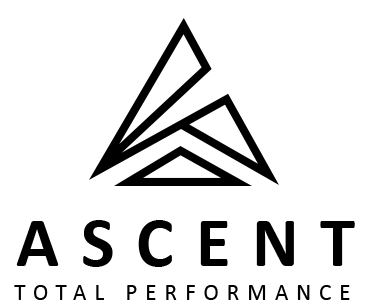Ascent Total Performance
TMJ / TMD in Columbia
Are you experiencing TMJ syndrome symptoms?
Do you suffer from headaches, grinding of your teeth, clicking of your jaw, or even ear pain? These can all be signs of Temporomandibular joint (TMJ) syndrome, also known as temporomandibular joint disorder (TMJD). This is a disorder of the jaw muscles and nerves caused by injury to the TMJ, which is the joint between your jaw and skull. The injured temporomandibular joint leads to pain with chewing, clicking, and popping of the jaw; swelling on the sides of the face; nerve inflammation; headaches; tooth grinding; and sometimes dislocation of the temporomandibular joint.
Understanding the causes of TMJ syndrome
Multiple factors contribute to muscle tightness and dysfunction that characterize this condition. Most often, poor posture and neck alignment change the pull of the muscles that make your jaw move. This causes painful grinding and irritation of the TMJ. Other causes may include:
- Poor alignment of or trauma to the teeth or jaw
- Teeth grinding
- Poor posture
- Stress
- Arthritis or other inflammatory musculoskeletal disorders
- Excessive gum chewing
Expert physical therapists dedicated to resolving TMJ syndrome
A lot can be done to help TMJ, starting with a thorough evaluation of your problem with our expert physical therapists. Unlike the vast majority of other Physical Therapy Clinics, our team consists solely of Doctorates of Physical Therapy (DPTs). We provide one-on-one care, ensuring focused attention and personalized treatment.
Once the root cause of your problem has been discovered, a comprehensive plan can be developed to quickly relieve your pain and restore natural movement to your TMJ. Furthermore, our physical therapists will teach you techniques for regaining normal jaw movement for long-lasting results.
What to expect during a TMD physical therapy evaluation in Columbia
Initial evaluation will take place on your first visit to a PT with TMD/TMJ. The PT will discuss your condition and ask questions about your jaw pain. Your eating habits and any other activities that could cause irritation to your jaw will also be discussed. The PT may also ask you about any previous treatment for TMJ/TMD pain. During the PT evaluation, you may also need to have several tests done in order to determine a baseline measurement.
A PT evaluation could include the following components:
- Measuring the neck and jaw range of motion
- Evaluation of the jaw structures
- Listening to clicks and clicks in a joint environment
- Measurement of strength in the jaw and postural muscles
- Assessing your posture
After your evaluation is completed, your physical therapist will talk with you about the results, create a plan for care, and work with you to set goals for your therapy.
Things to avoid with TMD
There are some things that you should avoid if you have TMD. These include:
- Using your teeth as tools
- Nervous chewing
- Hard, chewy or crunchy food
- Poor posture
- Sleeping on your stomach
- Teeth grinding
- Stress
How physical therapy can help with TMD
TMD is a condition that causes pain in the jaw. TMD can be treated with physical therapy. A TMD certified physical therapist can diagnose the root cause of your pain and help improve your jaw movement.
Non-invasive treatments are used by physical therapists to reduce pain and restore natural movement in your jaw.
TMD evaluations and treatment are a specialty of Ascent physical therapists. Please schedule an appointment at one of our locations to get a TMD assessment. A personalized care plan with a variety of treatment options can also be created for you. TMD can be effectively managed with physical therapy, even if the symptoms are severe and long-lasting.
See Our TMD Specialists in Columbia
The focus of physical therapy for TMJ is relaxation, stretching, and releasing tight muscles and scar tissue. In most cases, physical therapy can resolve TMJ and prevent the need for surgery. However, in cases where surgery is absolutely necessary, physical therapy is a vital part of the recovery process, as it helps minimize scar tissue formation, muscle tightness, and allows for a complete recovery.

Very professional yet friendly and fun atmosphere. My PT listens carefully and is able to adjust our therapy depending on what is happening then. I am impressed with my improvement already!
Charlotte Stalvey

I continue to be blown away by the care I receive at Ascent Total Performance. Dr. Floyd has treated several different joints/areas for me over the years and his knowledge and skill is unmatched. I actually drive from FL because there were no comparable therapists that I could find for dry needling. He has treated my plantar fasciitis, tendonitis in my ankle and a work injury to my wrist. I’m so thankful I found this practice.

